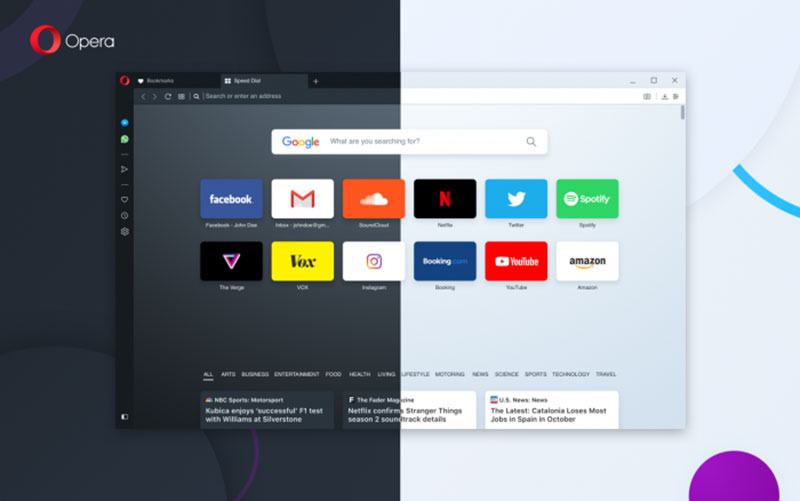What Is Nearshoring and How You Can Benefit from It

To understand what nearshoring is, first it’s necessary to understand what offshoring is. Offshoring is a common practice nowadays.
It is when a company moves its operations or manufacturing to a lower landed cost country. That is a country where it costs less for the company to operate and manufacture products.
In recent years, nearshoring has become more and more common. Most companies and business owners have heard of it.
There’s no question as to why it’s so popular. It is very commonly used to perform difficult, expensive, and time-consuming tasks.
The software development industry is an example of this.
So, what is IT nearshoring, and why it is so common? What are the pros and cons of using nearshoring?
These topics will be reviewed in this article.
Comparison With Other Business Approaches
Nearshoring vs Outsourcing
Outsourcing is closely linked to nearshoring. So it’s essential to know what it involves.
Outsourcing refers to the hiring of a contractor who works outside of the business. They may even be in another country.
They can complete work and tasks for your company on a daily basis.
Nearshoring has a more specific connotation. Outsourcing, on the other hand, is a much broader term.
Outsourcing involves a contract or agreement between one company and another. This means that one company hires another.
It performs tasks and activities that were previously handled by the original company. These are activities that could be handled in-house.
Onshoring, offshoring, and nearshoring are all types of outsourcing. Though each means something different and meets a specific need.
Outsourcing has many benefits, one of the most notable being cost reduction. This is one of many reasons that outsourcing has gained so much popularity over recent years.
The cost benefits that it offers companies continue to make it a popular option.
Nearshoring vs Offshoring
Offshoring and nearshoring are very similar in many ways. The contractor’s location is the only noticeable difference between them.
For the most part, an offshore company is a large distance away from the hiring company. Sometimes it is on a completely different continent.
With nearshoring, the contracted person or company is closer to the hiring company’s physical location.
Due to distance and time zone differences, offshoring can involve significant lag time. This may cause problems because of a lack of control.
Lags can sometimes be up to 12 hours. This may have a detrimental effect on important deadlines.
Offshore teams have a high turnover rate and could slow down software development. This is because most team members live in areas with lower life quality levels.
Yet, nearshoring can solve and fix many of these problems.
By using nearshoring businesses can benefit from increased profits due to lower costs. At the same time, they avoid all the problems and difficulties listed above.
Companies that work and deal with data protection laws often hire outsourced contractors in other places. This is so that they don’t have any difficulties with these laws.
Nearshoring would be a good option for these kinds of companies.
We can help you turn your idea into reality, take over your existing project, or extend your current development team.
Schedule a free consultation at hello@tms-outsource.com, or fill out the form and we will follow up with you shortly.
Nearshoring vs Onshoring

Onshoring is a much closer form of outsourcing. In general, onshoring is outsourcing to a company in the same country, but in another city.
This can help a company avoid several problems. Such problems include foreign tax policies and cultural differences.
In the process, it allows the company to invest in its own country and economy. Yet, this means that the company may have to deal with higher costs.
Consider, for example, an Amsterdam based consulting company.
With the onshore outsourcing model, the company can work with an IT or tech company outside of the Randstad area. Wages are lower outside the urbanized Randstad area.
To illustrate outsourcing in a simpler way:
- If a French company outsources to India, that’s offshoring.
- If a French company outsources to Germany, that’s nearshoring.
- If a French company from Paris outsources to Lyon, that’s onshoring.
Nearshoring is the best option for companies that are considering outsourcing. It offers greater benefits and higher efficiency.
At the same time, it reduces problems associated with offshoring. Nearshoring offers many other benefits too.
These include fewer cultural differences and fewer time zone differences. It is cost-effective and lowers travel expenses.
This will help the company profit more and allows for easier communication.
Benefits of Nearshoring
The benefits of nearshoring are quickly evident. Lower costs and/or cost-cutting as well as higher efficiency levels are a few of the benefits.
Another is that the products will likely be of higher quality due to better control and efficiency. Skilled workers are easier to find and hire and labor costs may be lower.
These benefits produce and encourage more benefits. Some of these include easier management and a better supply chain.
Improvements also include inventory control, including quality control, and improved customer services.
Wages are some of the highest expenses that companies have to deal with. That is why it is one of the main factors a company considers when choosing to use nearshoring.
Nearshoring will decrease the money a company spends on wages. Wages for factory workers in countries such as Mexico and China are way below the average.
This gap keeps getting bigger. Popular offshoring countries are also experiencing dramatic growth in wage gaps.
Examples of this include India and the Philippines.
Cost Reduction

Who doesn’t like to save money? Everyone prefers a cheaper option, especially if the quality is better.
Nearshoring offers that exact thing. It makes a significant cut in expenses while providing a better product.
This means that companies can spend money on more important or needy operations.
The countries that companies nearshore from and to will make a difference though. So be mindful of that and don’t forget to do research.
Hiring rates for developers can differ from country to country. As an example, consider the yearly salary of a developer.
In Mexico, this averages at around $15,700. A developer in the U.S. averages about $85,000.
This shows that it would be wise for a company operating in the U.S. to hire a developer in Mexico rather than the U.S.
This is similar to companies in the EU. For a company in Germany or Switzerland, it would be wiser to hire someone in Serbia, for example. There are a lot of IT companies in Serbia that are great at what they’re doing.
Time Zone Compatibility
Being in a similar or the same time zone as the parent company boosts efficiency and quality of work. It will help the company to avoid problems that could result from offshoring.
The teams can collaborate and communicate throughout the workday. This wouldn’t be possible if the team were an offshoring team, working on the other side of the globe.
Nearshoring allows for a higher level of flexibility in the workforce and team. It also allows clients to be more engaged and in control of the projects.
Resolution of problems is also much faster. This all contributes to a more efficient and successful company, saving time and money in the process.
Control and Influence
To help the company and employees work in a smoother and more efficient environment, nearshoring is a great tool.
Having the same or a similar time zone, culture, and language can all be of great benefit. It creates a common goal, offers more control over projects, and prompts more cost-effective actions.
Pool Talent Expansion
Nearshoring can also benefit companies by allowing them to find more qualified contractors. This can broaden their horizons, so to speak.
One of the most qualified and popular countries in Europe for nearshoring is Serbia. it has a high concentration of qualified individuals in specific trades and professions.
Common Culture and Values

It may seem that differences in culture and values are not important. However, if the country you outsource to is very far away, this can have a great impact.
Some cultures may take much longer breaks, or work at a slower and less efficient pace. This can disrupt the whole company’s ability to function.
Nearshoring can decrease the risk of these problems. By outsourcing to a nearby country, their values and culture are likely to be similar.
Another benefit to the company and teams is the predictability of behavior.
Improved Code Quality
The benefits of nearshoring can also contribute to a higher quality of deliverables.
Reflecting common goals, culture, language, and values in the company can give a more targeted and focused approach. Preferences, localization, and regulations are all made easier because of closer proximity.
Market Expansion
Nearshoring can also open a company up to new markets. This is through the broadening of their service territory.
One example is Expensify. This is a company that recruited a team of outsourcing specialists.
The specialists handled most of the backend development and workload. By doing this, the company could focus on more important and demanding tasks.
Clearly, nearshoring is an ideal type of outsourcing. It brings many benefits to the table that make it popular with companies all around the world.
The article will now take a closer look at custom enterprise software development. it will explore to what extent nearshoring can and should be used in this situation.
Cons of Nearshoring
Many of the cons involve mistakes in planning and a failure to prepare the business model. With that in mind, there are a few things to consider when looking for a solution provider.
- Searching for and finding a good match to the business model and values. A reliable partner that creates a smooth and problem-free work process can be a challenge to find. But working with a knowledgeable and respectable logistics partner has good results.
- Although the two countries may be close, their cultures and languages may differ. This can cause problems with things like holidays, vacation time allowances, and even work hours.
The benefits of nearshoring are very appealing. But it should still be carefully thought-out and considered.
Like anything, nearshoring can have its challenges. With careful planning and patience, they can be overcome or even avoided altogether.
It’s important to research all the facts and consult with your logistics partners. This will ensure that the transition to nearshoring is as smooth as possible.
Examples of Successful Nearshoring Services
Many well-known companies have used nearshoring to their advantage. Businesses, corporations, and startups can greatly profit from the nearshoring model.
Here are some examples of such:

This popular messenger app was first launched in 2009. The creators moved most of the development processes and workload to Eastern Europe.
Today, users can send messages, call through voice or video, and send a variety of documents and files on this app. The company was sold to Facebook for $19 billion.
Basecamp

This is a project management platform created in 2004. It contains many features such as a to-do-list, corporate messaging, file sharing, and time tracking.
Basecamp outsourced much of its development work. It is now worth about $100 billion, having around 15 million active users.
GitHub

Founded in 1999, it is an online repository hosting service. It is a platform for outsourcers and made by outsourcers.
Its purpose is to share code with programmers and developers. GitHub was acquired by Microsoft for $7.5B in stock.
The following large, well-known startups were made with software development outsourcing. These companies established the disadvantages and advantages of nearshore outsourcing.
Slack

Slack is a company made using outsourcing models from the beginning. It was recently bought by Salesforce for $27.7 billion.
Skype

A team in Estonia was used to run the company.
AppSumo

This company uses several resources from outsourcing including nearshoring.
Opera

They used development teams to create their platform through nearshoring. They likely face some of the challenges involved.
Mindspark

Using outsourcing models, this company makes mobile phone applications.
How to Best Work With a Nearshore Software Outsourcing Team
There are some important things to know before partnering or contracting with a nearshoring company. This information is based on responses from a recent employee survey.
Communicate Often Through an Understandable Language
Clear and regular communication is vital. It is the best way to help teams to stay organized, focused, and integrated.
For a nearshore model company, frequent communication is essential for success and growth.
There are many means to communicate for a nearshore company. Most of these are via the power of technology.
Instant messaging and calling tools will most likely work best.
Company Culture Matters
Treat external employees with the same value and importance as other employees. This will create stronger, more reliable teams.
Good communication will also help the teams work together better.
Work hard to give positive feedback and notice the achievements made. This will go a long way.
Avoid Micromanagement
It can be difficult to entrust an external team or group with a project. But do not micromanage the nearshoring teams.
This only causes frustration and disrupts the work. To have success, all parties must feel trusted and have the space to breathe and work.
Micromanagement causes rifts between those in leadership roles and employees. That will, in turn, make productivity slower.
Empower External Teams
Giving outsourced teams enough information to work off of is important. Withholding information or data stops the company from benefitting fully from the partnership.
Have confidence that the nearshoring team can do its job well.
Treat the Nearshoring Team as a Partner
By making the nearshoring team members feel like a part of the whole team, it boosts morale. This will make for a more productive and efficient work environment.
Treating a nearshoring team as a trusted and equal business partner is a must.
Ending thoughts on nearshoring and how you can benefit from it
Which outsourcing model to use depends much on what the business is hoping to achieve. If the focus is on keeping costs low and getting the job done, offshoring is most likely the best option.
Nearshoring is fast becoming the most popular and most liked outsourcing model. It’s a great model for most companies and it offers many opportunities.
Other benefits to nearshoring include more control and better access to the project. It is also less impacted by time, cultural, and language barriers.
Nearshoring does have its disadvantages, but the advantages greatly outweigh them. For companies wanting to begin outsourcing, nearshoring is the best option.
Looking for a development partner?
If you’re looking for a technology partner, development team augmentation, or just a company for your software&app development initiatives, consider TMS.
TMS is a software and digital company in Belgrade, Serbia. We develop innovative and modern software.
A few examples include premium booking software Trafft, MedTech apps like MR Prepare, or MarTech/AdTech apps like the Advise Media Suite, among other great software examples.
Check out our services and also some of the work we’ve done for our clients. Who knows, maybe we’ll form a successful relationship.
Schedule a free consultation at hello@tms-outsource.com, or fill out the form and we will follow up with you shortly.
If you enjoyed reading this article about nearshoring, you should check out this one on the best countries for outsourcing.
We also wrote about a few related subjects like outsourcing failures, Outstaffing, outsourcing to Serbia, in-house development vs outsourcing, and outsourcing to India.

